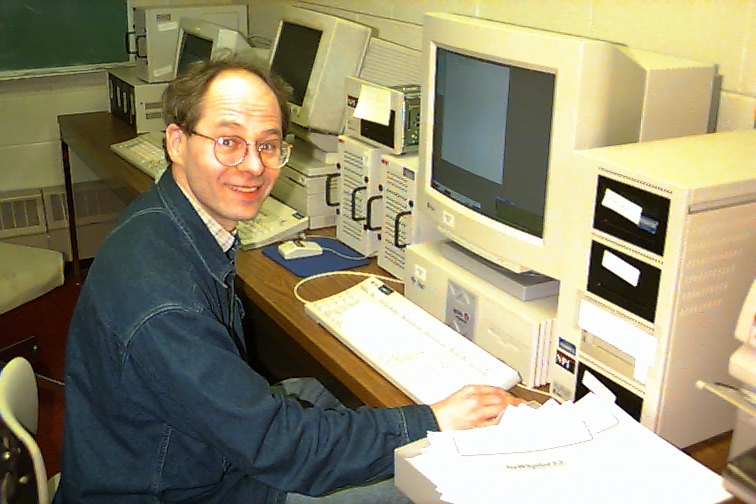
ERDIV CODE FACT SHEET 
1. Code Name: ERDIV
2. Category: Computation of transport in stochastic field
3. Responsible Scientist: Bas Braams
4. Others involved in code development: none
5. One line description: Monte Carlo computation of heat transport in stochastic magnetic field and ergodic divertor.
6. Computer systems which code runs on: Cray, Unix workstations
7. Typical running time (if applicable): several hours on workstation
8. Approximate number of code lines: 4000
9. Does this code read data files from another code? No
10. Does this code produce data files that can be read by another code? No.
11. 1-2 paragraph description of code: The code relies on a grid-free random-walk method to solve a highly anisotropic model heat transport equation in a realistic perturbed tokamak magnetic field. The walkers are launched in the core plasma and make small steps across the magnetic field and long steps along the field lines; the latter steps are evaluated by accurate field line integration. The distribution of points where the walkers cross the boundary is interpreted as the heat load on the boundary. This is a model equation, because we do not consider the dependence of parallel conductivity on temperature, nor do we solve for a consistent density profile. Only the (constant) ratio of parallel to perpendicular diffusivity is important. The efficiency of this random walk calculation is greatly improved by use of splitting and Russian roulette.
12. Similar codes to this code, and distinguishing differences: Work by Reimann and Pomphrey at PPPL, and by Nuehrenberg and Strumberger at IPP Garching. Our code differs from the PPPL code in that we use a true tokamak magnetic field. The Garching work is aimed at Stellerators.
13. Journal References describing code (up to 3): B. J. Braams and M. D. Teytel: "Investigation of the Effect of External Magnetic Perturbations upon Divertor Heat Load". Paper 1C21, 1993 International Sherwood Fusion Theory Conference, 29-31 March 1993, Newpoprt, RI.
14. New code capabilities planned for next 1-2 years: no firm plans.
15. Code users: none.
16. Present and recent applications of code: The code was used to assess the potential benefit of an ergodic divertor on ITER or TPX. The result was negative; it appears that coils have to be located unreasonably close to the plasma in order to achieve a beneficial spreading of the heat load. The code could and should be used for analysis of actual ergodic divertor experiments.
17. Status of code input/output documentation. Does not exist, but the i/o is quite simple. Contact the author.
18 Year Code was first used and present frequency of use: Code was used during 1992/1993.
19. Estimate of Man-Years invested in developing code: 0.25
20. Catagories of usage of Code (Check all that apply):
(x) application code to do analysis and prediction of experiments
(x) numerical testbed of theoretical ideas
( ) physics module to be used in integrated modelling
(x) code for machine design
21. Language code is writen in: Fortran-77
22. Results of intercomparisons with other codes and results of validation against experiments. Qualitative agreement with work of Reimann and Pomphrey. Detailed comparisons have not been done.